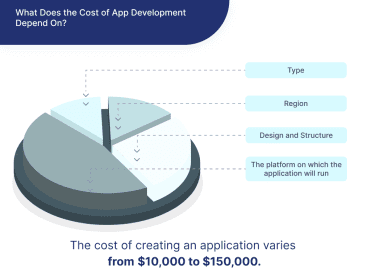Native vs. Cross-Platform App Development: Which Is Best for Your Business?
When it comes to mobile app development, businesses often face a crucial decision: Should they build a native app using Swift (iOS) or Kotlin (Android), or opt for a cross-platform solution like Flutter or React Native? The choice significantly impacts development costs, time-to-market, performance, and user experience. This article explores the pros and cons of both approaches, provides a cost and timeline comparison, and includes a real-world case study demonstrating how a business saved 30% with cross-platform development.
Educate Clients on Technical Choices While Positioning Your Expertise
In the fast-evolving world of mobile app development, businesses must choose between native development (Swift for iOS and Kotlin for Android) and cross-platform development (Flutter and React Native). This decision significantly impacts costs, development speed, performance, and user experience. Understanding these technical choices allows businesses to make informed decisions, ensuring long-term success. This guide provides an in-depth comparison of both approaches, offering insights into pros and cons, cost and timeline comparisons, and a real-world case study that illustrates the benefits of cross-platform development.
Pros and Cons of Native (Swift, Kotlin) vs. Cross-Platform (Flutter, React Native)
Native App Development (Swift & Kotlin)
Native apps are built specifically for one operating system, either iOS (using Swift) or Android (using Kotlin). This approach ensures optimal performance and full utilization of platform-specific features.
✅Pros:
- Superior Performance – Native apps interact directly with the device’s hardware, resulting in seamless animations, faster load times, and smooth user interactions.
- Optimized User Experience – Since they follow platform-specific guidelines, native apps deliver an intuitive and familiar interface for users.
- Full Access to Native APIs – Native development allows integration with advanced device features like Face ID, GPS, and AR capabilities.
- High Security Standards – Enhanced encryption and security compliance make native apps ideal for banking, healthcare, and sensitive data applications.
- Long-Term Stability – Direct support from Apple and Google ensures that native apps remain compatible with future OS updates.
❌ Cons:
- Higher Development Costs – Separate teams for iOS and Android lead to increased expenses.
- Longer Development Time – Features must be developed separately for each platform, slowing down the process.
- Complex Maintenance – Bug fixes and updates require individual deployment for each platform, adding to overall effort and cost.
Cross-Platform Development (Flutter & React Native)
Cross-platform frameworks allow developers to use a single codebase for both iOS and Android, reducing development time and cost.
✅ Pros:
- Faster Time-to-Market – A shared codebase accelerates development, allowing businesses to launch their apps quickly.
- Cost-Effective – Eliminates the need for separate iOS and Android teams, reducing expenses.
- Hot Reload Feature – Developers can see changes in real-time, making the testing and debugging process more efficient.
- Decent Performance – Though not as optimized as native, frameworks like Flutter use high-performance rendering engines to ensure smooth execution.
- Easier Maintenance – Updates and bug fixes apply to both platforms simultaneously, streamlining support efforts.
❌ Cons:
- Performance Limitations – Cross-platform apps may struggle with intensive animations or real-time processing tasks.
- Limited Access to Native Features – Some platform-specific functionalities require additional native code implementation.
- Larger App Size – Due to additional framework overhead, cross-platform apps tend to have a bigger footprint.
- Dependency on Third-Party Frameworks – Updates in Flutter and React Native may not always align immediately with the latest OS changes.
Cost and Timeline Comparison: Native vs. Cross-Platform
Cost and Timeline Comparisons
When deciding between native and cross-platform app development, cost and timeline are two of the most critical factors for businesses. Each approach has its own pricing structure, development speed, and long-term financial impact. Understanding these differences will help you make the most cost-effective and time-efficient decision for your mobile app project.
Development Costs: Native vs. Cross-Platform
The cost of app development largely depends on the technology stack, the number of platforms you target, and the complexity of the application.
- Native Development (Swift/Kotlin):
- Requires separate development for iOS and Android, meaning two different codebases must be written, tested, and maintained.
- Hiring separate iOS and Android developers increases labor costs significantly.
- Custom UI components and animations require additional development effort, adding to the budget.
- Cross-Platform Development (Flutter/React Native):
- Uses one codebase for both iOS and Android, cutting development costs by 30-40% compared to native.
- Reduces the need for separate developer teams, lowering labor expenses.
- Open-source frameworks like Flutter and React Native allow for faster UI development with pre-built components.
Estimated Cost Breakdown for a Mid-Sized Business App


Case Study: How you Saved 30% with Cross-Platform Development
Challenge:
A leading e-commerce startup wanted to launch a feature-rich mobile app on both iOS and Android. The app required a smooth checkout experience, real-time notifications, and deep device integrations. The initial proposal for native development estimated a $150,000 budget and an 8-month timeline.
Solution:
The company opted for Flutter to build a single codebase for both platforms. With Flutter’s rich UI framework, they replicated the native-like experience without doubling the effort. The team leveraged Flutter’s pre-built widgets to ensure fast load times and smooth transitions.
Results:
- Development cost reduced by 30% (final cost: $105,000)
- Time-to-market shortened by 3 months (5-month development cycle)
- Consistent UX across iOS and Android without separate design teams
- Performance improved with optimized animations and caching strategies
By choosing cross-platform development, the startup achieved its goals while staying within budget and launching faster than expected.
Conclusion: Which Approach Is Best for Your Business?
The choice between native and cross-platform development depends on your business needs, budget, and long-term goals:
- Choose Native (Swift/Kotlin) if: You need top-tier performance, advanced device integrations, and high security (e.g., banking, gaming, or AR/VR apps).
- Choose Cross-Platform (Flutter/React Native) if: You want a faster, cost-effective solution with a solid performance (e.g., MVPs, e-commerce, or service-based apps).
If you’re unsure which approach is right for you, consulting with an experienced app development team can help assess your project requirements and make an informed decision. Investing in the right development strategy can save time, reduce costs, and ensure long-term app success.

